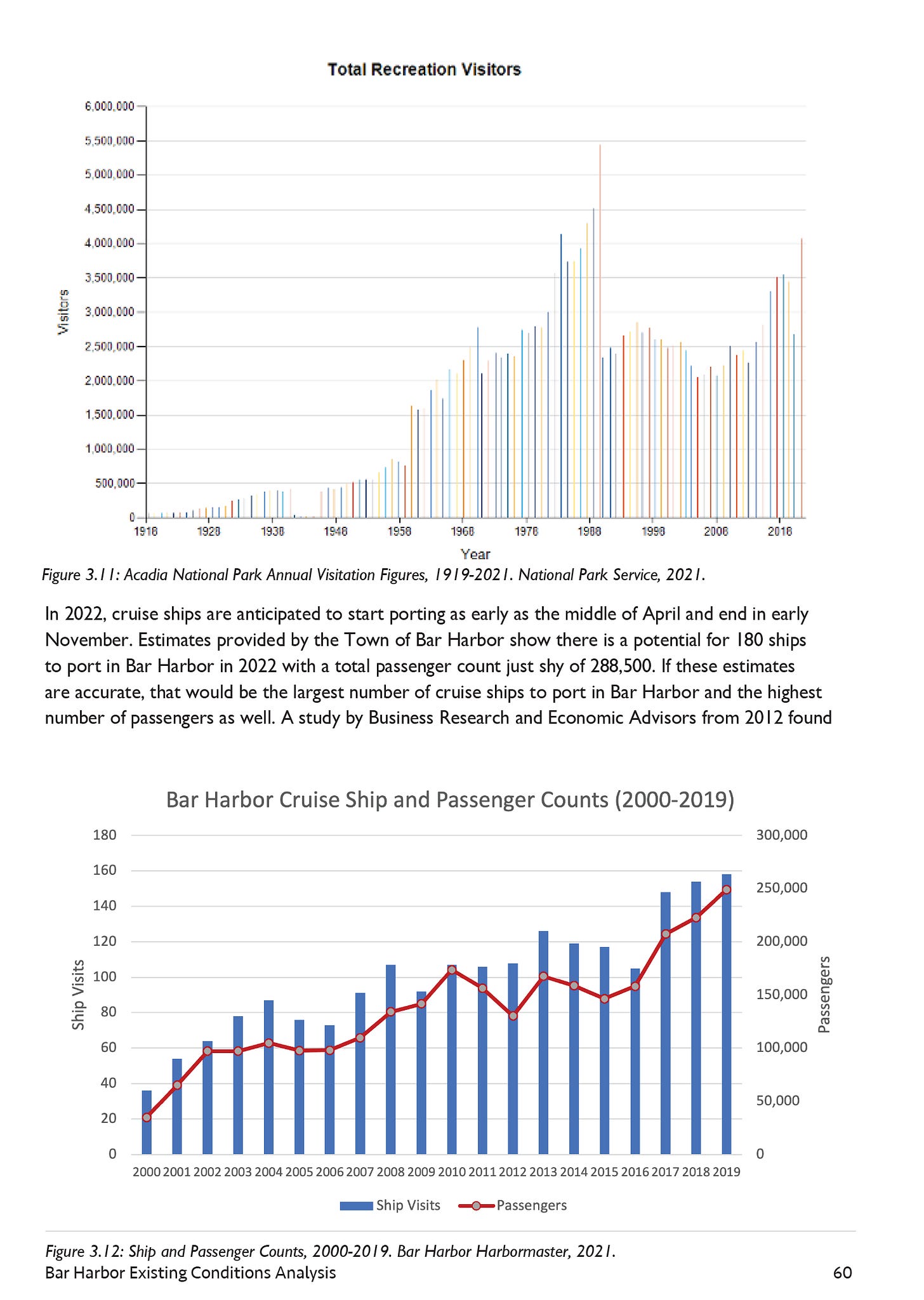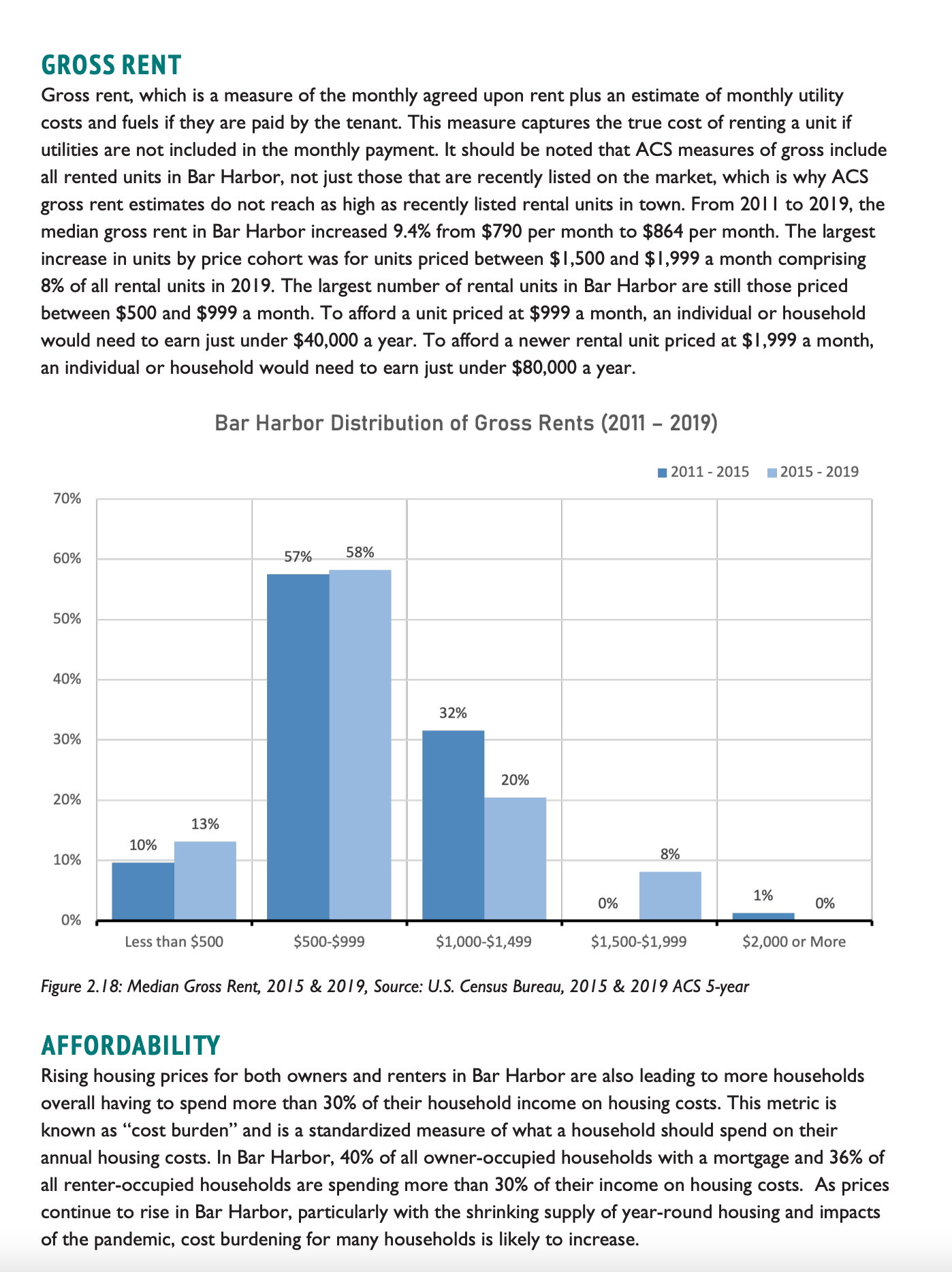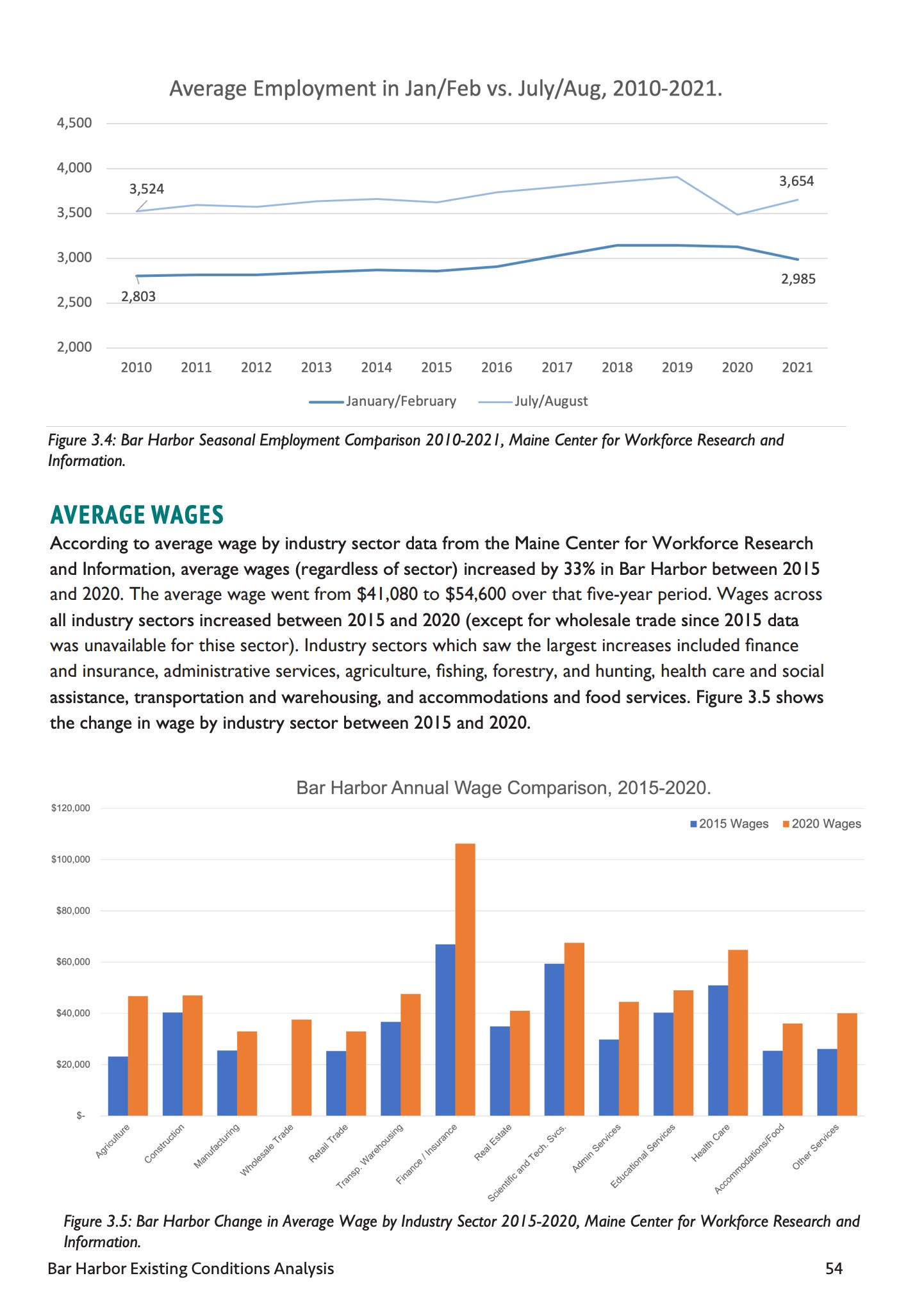Developing Bar Harbor's Goals and Objectives
Joint meeting moves through 2007 Comprehensive Plan to Create New Plan and Vision
BAR HARBOR—Respecting and learning from the town’s old Comprehensive Plan while continuing on with the new one has been part of the motive of the town’s Planning Department and Comprehensive Planning Committee as they engage in a series of workshops with other committees, boards, and town officials.
Some of those workshops and joint meetings involve going through the long document’s strategies and policies section, itself over 40 pages long, one by one, and seeing if they’ve been met; if there is still consensus that they should be included in the upcoming plan, though revised; or if they are no longer warranted.
Planning Director Michele Gagnon didn’t want to ignore the 2007 Comp Plan, the last one in Bar Harbor, but to remember what had been done and what had been thought as being important. The next plan, she said, will be more engaging and comprehensive.
TIMELINE
That work to understand, to revise, and to build on, continued Wednesday night during a two-hour workshop in Council Chambers at the town’s Municipal Building on Cottage Street.
Before the workshop members got down to the nitty-gritty, Planning Board Chair Millard Dority asked what the earliest date was that the plan could go before the voters.
Just yesterday, Steve Whitman of Resilience Planning and Research(the group facilitating and writing the plan), Gagnon, and a representative from the state talked about how to expedite the process when it goes to state review. There’s a slight possibility that the plan might be to the voters in June 2024, but that felt tight, Whitman said. The worst case scenario is that the plan would go before voters November 2024. The committee members were worried about losing momentum with the public’s interest if it took that long.
The plan, which is the vision for the town’s future, must be approved by both voters and the state.
“We need to do that necessary engagement and outreach,” Gagnon said about the timeline. “An epic failure would be that we rushed through something.” And then the voters didn’t support it.
She wants people to understand and be comfortable with the overall plan and vision for their town’s future.
Dority’s concern is that the Planning Board has to tread water on several issues while waiting for the Comprehensive Plan. Gagnon said that staff has looked at the Planning Board’s list of amendments and will be able to bring that to them with thoughts and priorities at its next meeting.
“At the end of the day what needs to be brought to the forefront of this Comp Plan is what really, really matters to us,” Gagnon says.
THE PLAN ITSELF AND WHY THERE IS ONE
According to the town’s website,
According to Whitman, Bar Harbor’s plan will be thematic.
That means, he said, that it “allows us to better emphasize the biggest needs, and ensure strong links and understanding across topics.” The belief is that this will also make the development and prioritization of the implementation aspects of the plan more effective.
The Comprehensive Plan is just one element of the town government. There are committees, boards, and task forces that have goals. The Town Council also has goals. Different town departments have goals.
Gagnon said, “Everything should be all brought together so that we can know we are going to a common area.”
“You need to take the time to think about the future,” Gagnon said. And it needs to be part of the culture of the town to look at that plan when making decisions.
The plan leans on the Existing Conditions Analysis Report that the town created last year. The report shows the state of many aspects of the community: housing assets and needs, population, economy, marine resources, how much land the town actually has that isn’t preserved by conservation or the National Park System.
The state mandates that municipalities update their comprehensive plans and the plans are meant to guide the town and help officials implement plans for Bar Harbor’s future, including development, protection of natural resources, and other pieces that the town deems important.
TOURISM MANAGEMENT AND HOUSING
Planning Board member Cosmo Nims asked if the management of tourism discussion belonged in the Comprehensive Plan. Gagnon said no, but having the plan say that the town needs to come up with a tourism management strategy and that it needs to monitor tourism and its impacts could be.
Policy 9C of the last plan reads, “to continue to monitor, study, and catalog aspects of the tourism industry in order to gain a greater understanding of its contribution to the economy and its impact on Bar Harbor’s resources and revenues.”
Planning Board member Joe Cough said things like VR-1s being rented for 20 weeks a year would be part of tourism management though possibly not immediately thought of as that. Those home-owner rentals might erode a neighborhood’s character for the summer, but they also allow people to stay when they can’t afford their taxes.
Cough also brought up the possibility of MDI High School, which sits in Bar Harbor hooking up to a new wastewater line that could connect to a plant in Mount Desert, requiring another collaboration between towns. If that, or a similar plan, occurred, homes in the area could also potentially hook up to that line, negating the need for septic systems. Lincoln Millstein of the Quietside Journal attempted to ask a follow-up question directly to Cough, which Gagnon didn’t allow. This resulted in Millstein questioning if she had the right to not allow him his question and if she was chairing the meeting.
MONITORING RECENT LUO AMENDMENTS AND THE TOWN’S TRADITIONAL CHARACTER
Monitoring the new amendments to the town’s land use ordinance and making sure they are effective should occur according to one policy in the last plan. Another focused on seeking “ways to make regulations more user friendly, efficient, and streamlined to reduce costs.” The second half of that strategy involves “providing adequate protection of Town character.”
A couple of the policies deal with residential integrity and preserving the town character while also not increasing too much expense on the town by expanding infrastructure for water and sewer. Comprehensive Planning Committee member Jim Mahoney said that he would think about taking uses for downtown parking garages and lots out of residential zones as a strategy under that policy.
Comprehensive Planning Committee and School Board member Misha Mytar doesn’t think there have been conversations about mixing commercial and residential mixes downtown as a need. Instead, she’s been hearing about directing residential development where there is infrastructure to support that, which is in the downtown areas.
Dority said that the state’s new LD 2003, which is meant to increase housing density and affordable housing, will impact the residential areas. Gagnon said that if there is a tourism management strategy, it will provide some guidance about growth. She said that they heard in public comment that there is an interest in protecting residential areas and how they cohabitate with other uses.
“I would just blow it up and start all over again,” Mahoney said about Policy 2B, which speaks to numerous nonconforming commercial uses.
“We’re saying 2B or not 2B,” another member quipped.
ECONOMIC DEVELOPMENT
Policies to simplify the land use map and land use ordinance were given a collective thumbs-up as was watching over how the plan is updated and having its successes monitored. Though those policies were supported the text beneath both items may be rewritten by Resilience.
Cough said all hands on deck right now about meeting housing needs. What if that goal was miraculously met, he wondered, how does the Planning Department, Planning Board, Town Council, and others shift to focus on different needs? Cough said it would be shortsighted to not look at economic development as well as housing as important.
Planning Board Chair Ruth Eveland said she hoped there would be more conversation around home-based businesses.
Mytar said that they are interconnected and aren’t stand-alone issues. Economic development has a housing piece and transportation piece and vice versa. She questioned if commuting puts the economy in jeopardy. Gagnon said that there is a regional collaboration with Noel Musson about the steps to help with those issues. She stressed that long term planning about other types of uses and where you place them is important and when it comes to economic diversity, all of Bar Harbor’s eggs are in one basket. There is tourism. There are the two science labs, the national park, the college, and the hospital.
The Musson Group recently received $75,000 from the state’s Housing Opportunity Program. The money is meant to begin programs discussed at the 2023 Mount Desert Island Housing Solutions Summit. The press was not allowed at that March event. The summit’s steering committed included Mytar via her employment at Maine Coast Heritage Trust and Gagnon.
During Wednesday’s joint meeting, Town Council Chair Val Peacock asked about the difference in the plan’s definition of “commerce” and “tourism” and if there is one according to the plan.
There was also a brief mention of the Downtown Master Plan, which exists, but Gagnon doesn’t feel like it’s being used and needs updating. Comprehensive Planning Committee member David Woodside said he couldn’t find it on the town’s website. The summary is on the Hancock County Planning Commission’s website.
Whitman said it’s important that everyone understands the existing patterns and opportunities within the town for housing and economic development and transportation.
There was discussion about incentivizing affordable housing but also the bigger picture of housing. Mytar also said that they need to keep the focus on making sure there are rental units built as well.
Biking infrastructure and encouraging the uses of renewable energy resources was also supported.
The plan is to take what they learned and package clear actionable strategies under six or seven themes so that the town knows how to move forward and act in the next decade.
Those themes are:
Resources stewardship
People-centered transportation
Housing solutions
Infrastructure investments
Economic diversity
Regulatory revisions
The third joint workshop will be in October.
LINKS TO LEARN MORE
Existing Conditions report (or below)
https://www.barharbormaine.gov/517/Comprehensive-Planning-Committee
https://www.barharbormaine.gov/501/Comprehensive-Plan
https://resilience.mysocialpinpoint.com/bar-harbor-comprehensive-plan/home
2007 Comprehensive Plan and Vision Statement
More about the Comprehensive Planning Committee
The town’s website dedicated to the Comprehensive Planning process
The summary of that early 2000s Downtown plan is below along with the Existing Conditions Report Summary, report as a whole, and the MDI Housing Summit Summary report.

























